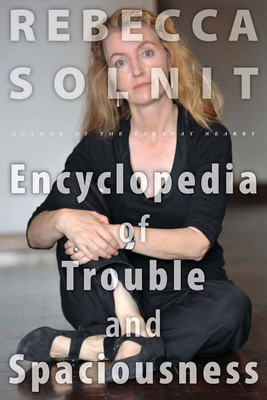The Encyclopedia of Trouble and Spaciousness
Rebecca Solnit

I picked up this book as part of my 2016 campaign to read more female authors, and I’m very glad that I did. I had seen Solnit’s name come up in various contexts, primarily the Brain Pickings blog, and my campaign was exactly the motivation I needed to actually pick up one of her books. I picked this one somewhat at random, because it was available from the library. I will definitely be looking to read more!
Solnit is kind of a left-wing humanist literary journalist, if that makes sense. Her most famous (I think) book is about how communities respond in the wake of natural or manmade disasters, and although I haven’t read it, several of the essays in this book address the topic, in the context of Hurricane Katrina, Deepwater Horizon, and Fukushima Daiichi, for example. (As a side note, it was interesting to read this book and be taken back to all of these events that were so significant at the time, but have largely receded from public memory today.) She writes about the problems with the media’s portrayal of aftermath situations, and the general quick pivot of law enforcement from life-saving to property-guarding. She has a great line in this book, which I can’t quote verbatim because I don’t have it to hand, but that says in effect that the best form of governance is exactly the kind of locally organized mutual aid that obtains in the wake of disaster, if only we could figure out how to preserve it beyond the immediate aftermath.
Reading this book also prompted me to see Solnit speak at the Bay Area Book Festival, which was a great experience. In person she had a sort of irreverent sense of humor that doesn’t totally come through in this book, although it seems consistent with her writing. In general, I also think she has a sense of hope that comes through clearly in person and that is an important part of her writing. At the BABF, she joked that her goal is to take away from the left the warm cozy blanket of despair, and I thought that was a good characterization.
One specific note on this book–there are a couple of essays in it that, while not exactly crappy, are quite different from the others and, in my view, aren’t very good exemplars of her writing. There’s nothing wrong with this per se, except that one of them is the very first essay in the book. This is poor editing in my view. If you pick this book up, I’d recommend starting with any of the essays that appear to be about a disaster-related event to get a better exemplar.